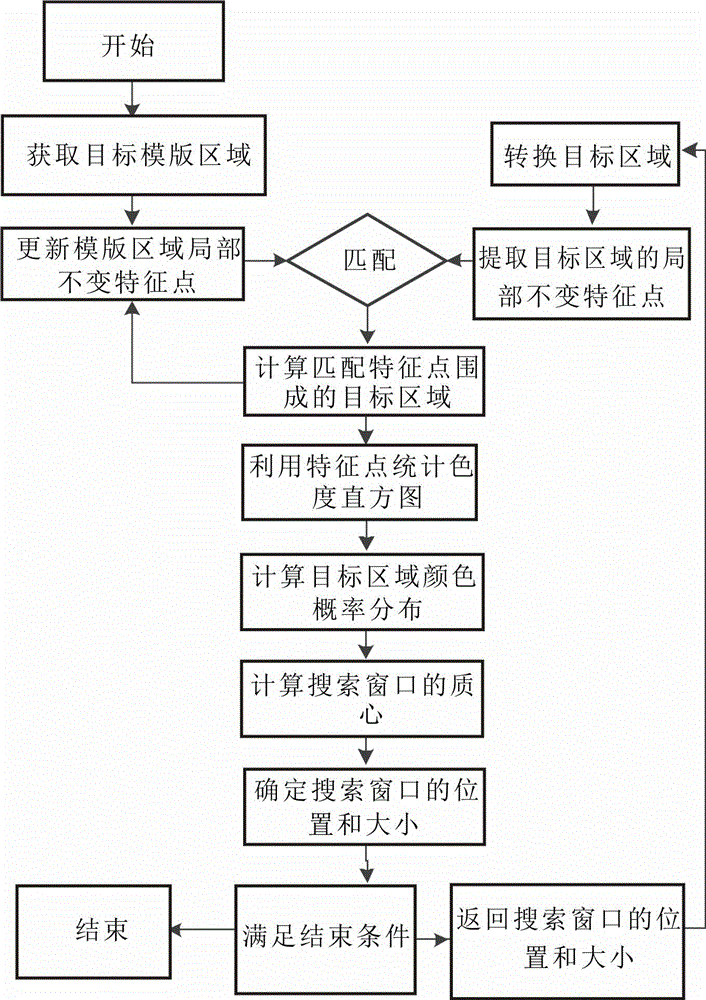Adaptive mean shift algorithm based on local invariant feature detection
A technology of local invariant features and mean shift algorithm, applied in computing, image data processing, instruments, etc., can solve problems such as tracking failure, tracking window expansion, failure, etc., achieve accurate target tracking and improve search accuracy
- Summary
- Abstract
- Description
- Claims
- Application Information
AI Technical Summary
Problems solved by technology
Method used
Image
Examples
Embodiment Construction
[0024] Such as figure 1 As shown, the present invention provides an adaptive mean shift method based on locally invariant feature detection, and the specific implementation steps of the method are as follows:
[0025] Step 1: At the start frame of the video Select the target area to be tracked .
[0026] Step 2: Convert the image Map from RGB color space to HSV color space and calculate the target area The color probability distribution of .
[0027] Step 3: Calculate and extract the target area local invariant feature points.
[0028] First construct the scale space in is the scale factor, * is the convolution operator. is a Gaussian function. Computing the difference of Gaussian space ;
[0029] Secondly, the differential space is derived to obtain the extreme point ,in is the offset relative to the sampling point; by the threshold , and the Hessian matrix , Remove low-contrast points and edge points; according to the gradient size of pixels ...
PUM
 Login to View More
Login to View More Abstract
Description
Claims
Application Information
 Login to View More
Login to View More - R&D
- Intellectual Property
- Life Sciences
- Materials
- Tech Scout
- Unparalleled Data Quality
- Higher Quality Content
- 60% Fewer Hallucinations
Browse by: Latest US Patents, China's latest patents, Technical Efficacy Thesaurus, Application Domain, Technology Topic, Popular Technical Reports.
© 2025 PatSnap. All rights reserved.Legal|Privacy policy|Modern Slavery Act Transparency Statement|Sitemap|About US| Contact US: help@patsnap.com

